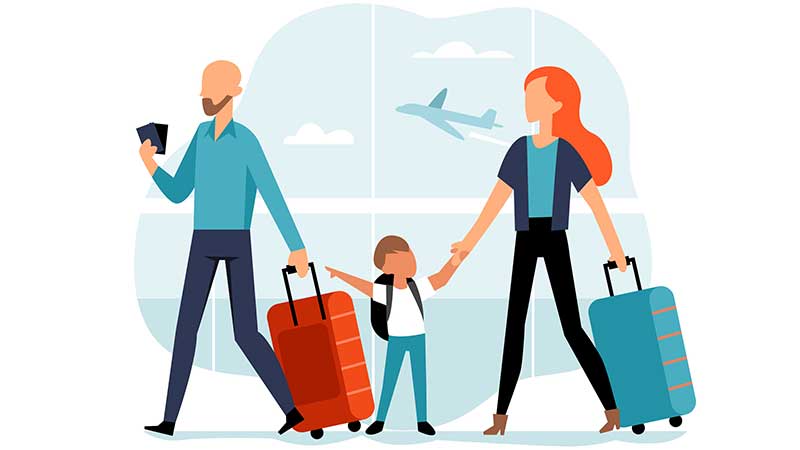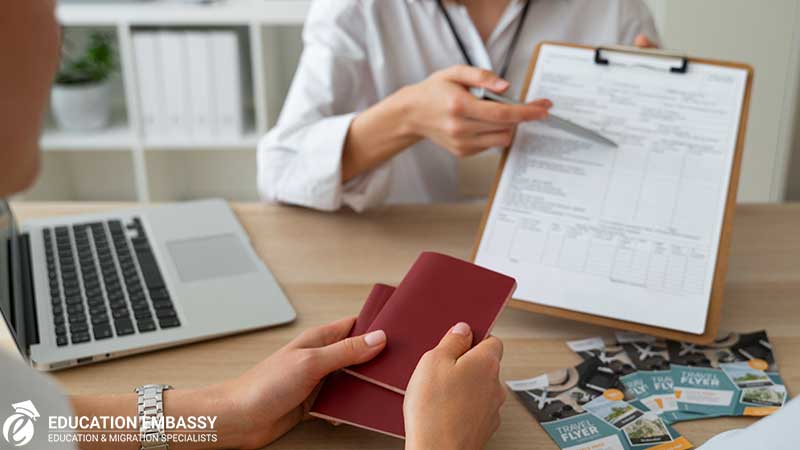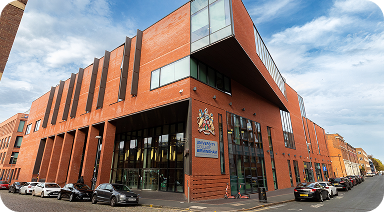
The Cost of Living in Brisbane for New Migrants: A Breakdown
 Admin
Admin Are you thinking about moving to Brisbane, Australia? Let's break down the cost of living there. You will be surprised to know that Brisbane is a sunny city and it remains sunny for more than nine months of the year. It also goes by the name Queensland of Australia. With Brisbane's pleasant and sunny weather, one has all reasons for visiting-the allure of the city being beach access to the Gold Coast and Sunshine Coast, innumerable parks, reasonably priced housing (especially compared to home prices in Sydney and Melbourne), and generally a family-friendly atmosphere.
Whatever your reason or motivation for moving here—a new job, long-term work, a desire for a lifestyle change, and more. The ImmigrationBrisbane will help you understand the cost of living in Brisbane.
Average Working Salary in Brisbane
Your salary in Brisbane should normally range from AU$74,000 to AU$80,000 per year, but it totally depends on your job. If you come from the IT or healthcare sector, you can comfortably survive in this city. Some positions can earn as low as AU$47,000, while higher-paid positions can earn up to AU$107,000 per year.
Cost of living in Brisbane: Breakdown
Brisbane is a great city to live in compared to Melbourne and Sydney; the weather is one of them. Sunny days, beaches, etc. are other reasons. Apart from that, while you need your budget to live comfortably, the cost of living in Brisbane depends on your lifestyle and the way you live.
Here is a breakdown of the living expenses you should consider. Note that we will discuss each item in detail in this guide.
- Housing
- Utilities
- Food and drink and eating out
- Transportation
- Healthcare and insurance
Brisbane Rental Prices or Housing Cost
Housing costs mainly depend on location and size:
An apartment in the city with one bedroom will be approximately between AU 400 and AU 600/week.
When you want to reside in a metro city, you will have to pay approximately AU$1,879 monthly on a one-bedroom apartment.
To help you plan better, here's a table showing current estimates for properties available for rent and sale in Brisbane:
| Unit Description | Average Price in AUD |
|---|---|
| One bedroom apartment in the city centre (40 m2 or 430 ft2) for rent | 1443 per month |
| Cheap One bedroom apartment (40 m2 or 430 ft2) for rent | 1015 per month |
| Three bedroom apartment in the city centre (80 m2 or 860 ft2) for rent | 2386 per month |
| Cheap three bedroom apartment (80 m2 or 860 ft2) for rent | 1744 per month |
| Apartment price to buy in the city centre, per 1 m2 or 10 ft2 | 7172 |
| House price to buy in the suburbs, per m2 or 10 ft2 | 4905 |
It is important to note that the prices of apartments, townhouses and standalone homes will vary. When you are renting you will also have to cover the extra rental expenses, which include bond payments and utility connections fees as well as tenant insurance.
Property taxes and flood insurance are also some of the hidden costs of owning a home.
Utilities Bills in Brisbane
Besides the expense of renting or buying a home, you must also take care of your household bills, which entail the price of electricity, water, internet connectivity, and mobile phones.
The following are just some of the average figures that you can use as a starting point in budgeting.
| Electricity | 140 and up |
| Water | 100 |
| Internet (depends on the speed and service provider) | 49 to 90 |
Mobile phone charges can come in the form of prepaid and postpaid plans:
- Prepaid plans start at AU$27.
- Postpaid plans start at around AU$35.
If you're paying for the phone upfront, you'll pay around AU$87 per month.
Food and Groceries Costs in Brisbane
A major cost of living is food, so the cost of groceries and eating out can add up quickly.
If you are cooking at home, it will definitely be cheaper, and you will get nutritious meals too, especially if you plan a balanced meal.
Here is a list of common foods if you are buying from the supermarket, and their average price.
| Common Grocery Items | Avg. Cost |
|---|---|
| White Bread (500 g) | $3.52 |
| Eggs (12) | $6.73 |
| Milk (1 L) | $2.41 |
| White Rice (1 kg) | $2.71 |
| Chicken Fillets (1 kg) | $13.07 |
| Round Beef (1 kg) | $21.31 |
| Local Cheese (1 kg) | $13.07 |
| Potatoes (1 kg) | $3.70 |
| Lettuce (x 1) | $3.15 |
| Tomatoes (1 kg) | $5.73 |
| Apples (1kg) | $4.92 |
| Oranges (1 kg) | $4.25 |
| Bananas (1 kg) | $4.23 |
| Onions (1 kg) | $3.32 |
| Water (1.5L Bottle) | $1.99 |
An average grocery bill of an individual is approximately AU213 per week. In case you simply wish to have a quick bite at a cheap restaurant, spend around AU$13 to AU30.
A mid-range restaurant dinner out with two people will cost between AU$65 and AU$200. Naturally your final bill will always be determined by what you order or eat.
In case you cannot live without coffee, the common products, such as cappuccinos, mochas and lattes, would cost you between AU$4 and AU7 or even more. In case you do not mind about price, you can find cheaper coffees as low as AU$2 in such locations as 7-Eleven, where you can also receive a discount in case you carry a reusable cup.
Transport Costs in Brisbane
Getting around Brisbane is quite affordable, especially if you using public transport.
Here is a table that shows the costs related to transport:
| Mode of Transport | Approx Cost |
|---|---|
| Ticket for Local Public transport | AUD 4.34 |
| Ticket for Monthly Pass in a Public transport | AUD 193 |
| Local tariff for the Taxi Ride of 1 km | AUD 2.29 |
| Normal Tariff of taxi for 1 hour Waiting | AUD 51.60 |
| 1 L or 0.26 gal Gas / Petrol | AUD 2.00 |
Healthcare and Insurance Costs in Brisbane
In addition to the cost of living in Brisbane, another imprtant expense is healthcare and insurance costs. Australians and permanent residents receive subsidized healthcare through Medicare. This includes
- General practitioner (GP) visits.
- public hospital treatment,
- certain prescribed medications under the Pharmaceutical Benefits Scheme (PBS).
However, Medicare does not cover private specialists' fees, dental treatment, physiotherapy or ambulance services. A standard GP consultation without Medicare costs between 80 and 120 Australian dollars, while specialist appointments can cost between 200 and 500 Australian dollars depending on the doctor's specialism and location.
The cost of private hospital stays differs considerably, without insurance this cost can exceed 1,000 Australian dollars per day. Private health insurance in Queensland starts at around 120 Australian dollars per month for basic hospital cover, while comprehensive plans cost over 300 Australian dollars per month. Dental and eye care coverage are additional.
Conclusion
While the cost of living in Brisbane seems less turbulent than approaching in opportunities in Sydney and Melbourne, you have to do careful planning. This blogs cover all the Housing and utilities, groceries, simple transportation, and healthcare expenses. clearly having a budget should remain a must. While Brisbane rental prices are among some of the highest in the city centre, a budget option will be had in the metro city. Offering good salaries, sunny weather, and a family life, Brisbane indeed creates an environment suitable for every newcomer. At Immigrationbrisbane, Knowing Living costs in Australia for migrants can make things easy to live a balanced life in one of the finest cities in Australia.
FAQ’s
Q. Is living in Brisbane afdfordable than Sydney and Melbourne?
Yes, Brisbane is afdfordable than Sydney and Melbourne in most cases, especially in terms of accommodation and daily cost of living.
What is the Brisbane rental prices?
The average Brisbane rental prices of one-bedroom apartment in the city centre is approximately AU 1,400-1500 per month, and less expensive alternatives outside the centre are around 1,000 per month.
What is the average monthly grocery bill of Brisbane?
To one individual, the cost of groceries is approximately AU$213 a week, depending on the way you eat.
Is Brisbane an expensive place to use public transport?
The cost of public transport is low and one ticket is approximately AU$4.34 and monthly pass around AU93.
Is health insurance necessary to migrants in Brisbane?
Yes, and that too, when you are not entitled to Medicare. Depending on the level of cover, the private health insurance begins at approximately Au120 per month.
Categories:
Related Blog Article :

A Beginner's Guide to the Australian Immigration Process

Contributory Parent visa (Subclass 143)

Resident Return Visa - Subclasses 155 And 157

Australian Passport Renewal

Australia Subclass 491 Visa: Eligibility, Documents, Process, and more

Australia PR Points Calculator

Employer Sponsored Visa Australia
Related Videos :












